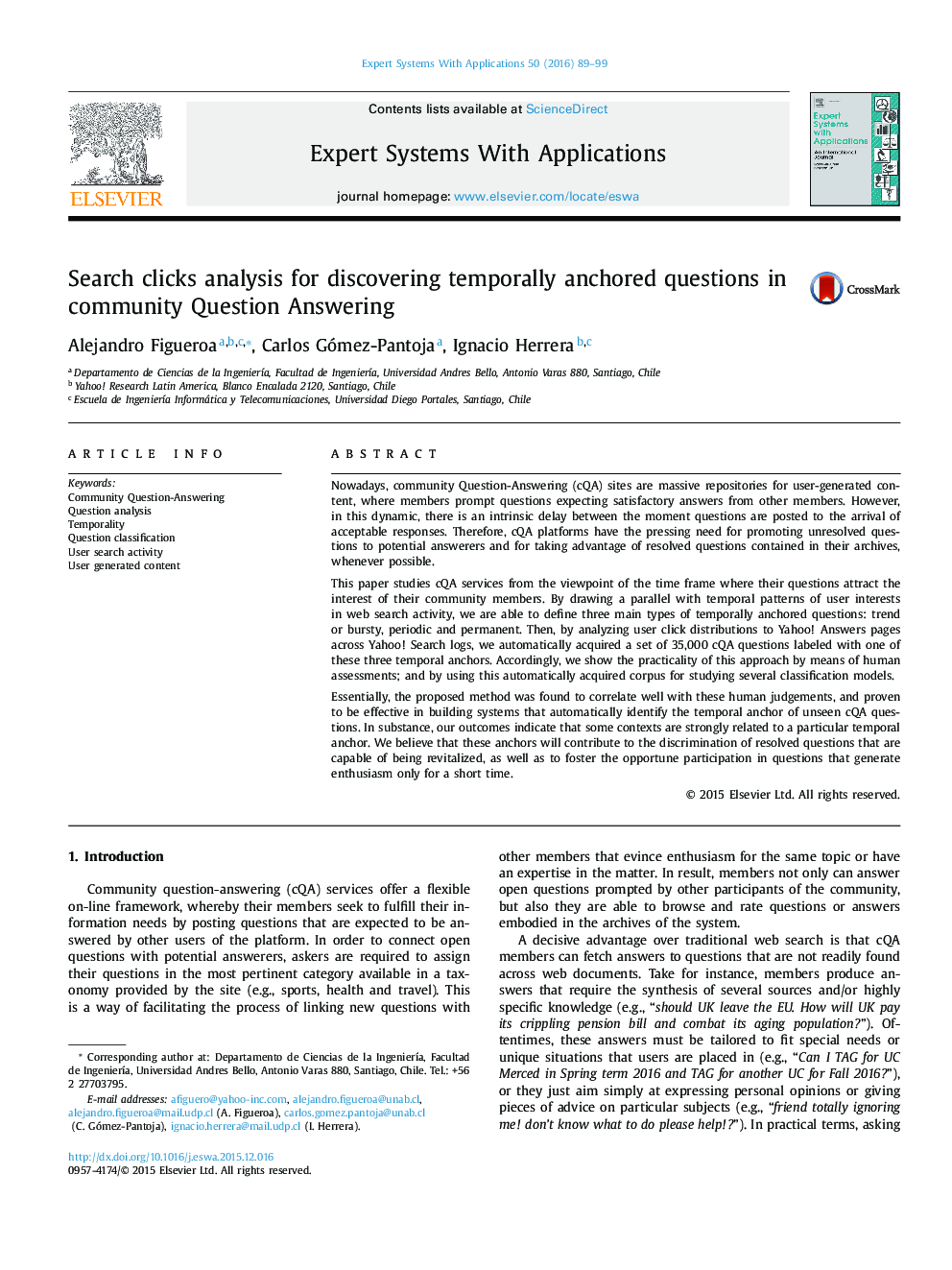| کد مقاله | کد نشریه | سال انتشار | مقاله انگلیسی | نسخه تمام متن |
|---|---|---|---|---|
| 382011 | 660722 | 2016 | 11 صفحه PDF | دانلود رایگان |
• We study temporal click patterns across search query logs in relation to cQA pages.
• Search activity analysis helps to define three temporal interests for cQA questions.
• We automatically tagged 35,000 questions according to these temporal anchors.
• Our approach was validated by two judges; and by predicting anchors on unseen data.
• Our outcomes indicate that some contexts are related to a particular temporal anchor.
Nowadays, community Question-Answering (cQA) sites are massive repositories for user-generated content, where members prompt questions expecting satisfactory answers from other members. However, in this dynamic, there is an intrinsic delay between the moment questions are posted to the arrival of acceptable responses. Therefore, cQA platforms have the pressing need for promoting unresolved questions to potential answerers and for taking advantage of resolved questions contained in their archives, whenever possible.This paper studies cQA services from the viewpoint of the time frame where their questions attract the interest of their community members. By drawing a parallel with temporal patterns of user interests in web search activity, we are able to define three main types of temporally anchored questions: trend or bursty, periodic and permanent. Then, by analyzing user click distributions to Yahoo! Answers pages across Yahoo! Search logs, we automatically acquired a set of 35,000 cQA questions labeled with one of these three temporal anchors. Accordingly, we show the practicality of this approach by means of human assessments; and by using this automatically acquired corpus for studying several classification models.Essentially, the proposed method was found to correlate well with these human judgements, and proven to be effective in building systems that automatically identify the temporal anchor of unseen cQA questions. In substance, our outcomes indicate that some contexts are strongly related to a particular temporal anchor. We believe that these anchors will contribute to the discrimination of resolved questions that are capable of being revitalized, as well as to foster the opportune participation in questions that generate enthusiasm only for a short time.
Journal: Expert Systems with Applications - Volume 50, 15 May 2016, Pages 89–99
